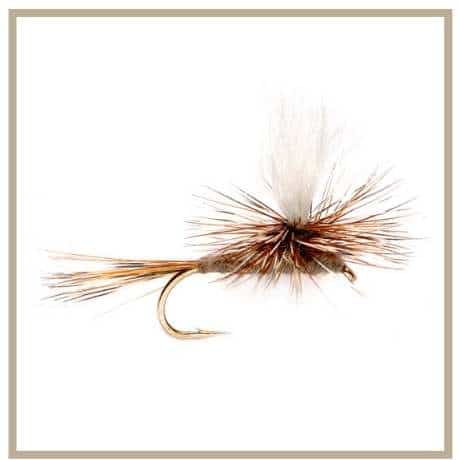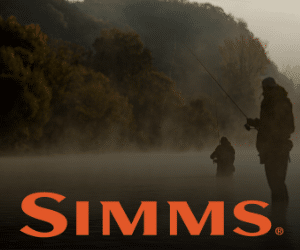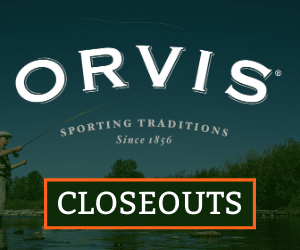One of the more popular trout dry flies of all times, the Parachute Adams fly is a classic fly that works well for most trout fly fishermen.
Everything you need to know about the Parachute Adams Dry Fly
The Parachute Adams is one of the most dynamic and versatile fly fishing flies available. It is most popular when used fishing for trout such as Rainbow Trout, Brook Trout and Brown Trout (it can be used on a wider variety of trout, those are just the most popular).

When it is thrown into the water, it imitates what an adult Mayfly, Flying Caddis or Midge would look like. All three of those are very popular meals of a typical trout, making this fly extremely popular. Since this fly was originally invented in 1922 it has become one of the best flies to catch trout on.
If you do not have any of Parachute Adams Dry Flies in your fly box, you are missing out an awesome opportunity to catch a lot of trout!
The Parachute Adams fly is the one fly that every fly angler should have in his or her's fly box. Trout love these little guys.
Dry Fly
The Parachute Adams is considered a “dry fly” because it floats on top of the water. The trout must come up to the top of the water to grab the fly, creating an awesome experience for the angler.
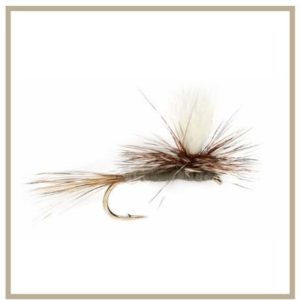
The Adams is very popular because it can be fished in a lot of different situations. You don’t need the water to be a certain depth for the fly to work (like a wet fly). It’s not going to snag on any river bottom logs or anything because again, it stays above the water.
A common misconception of fly fishing is that the fish aren’t going to bite unless the fly is underneath the water, in the fishes face. This is simply not true, think of it like this — if someone put a bacon, mac and cheese burger, served on a shiny silver platter directly in front of you, with only one exception – that you have to stand up to grab it, would you eat it it? Exactly.
Now, if the water conditions are too dark, or the water is too deep, you don’t want to use the Parachute Adams. I know it kind of contradicts what I just said, but the trout are not going to go eat what they cannot see. SO, trout will go and eat the Adams fly all day if they can see it, but they cannot eat what they cannot see.
In situations like these, throw on a Pheasant Tail Nymph or other wet fly. It’ll drop below the water in front of the fish’s eyes, and they’ll most likely bite. Not a guarantee, but the chances of catching a large fish significantly increase in low water vision water conditions.
If you do decide to go with the Parachute Adams (or any dry fly), you’ll need some floatant. Floatant is a little gel like substance that’s placed onto the hairs of the fly, to help keep it afloat. Otherwise, your dry fly will soon be a wet fly.
I personally enjoy fly fishing with dry flies because I can actually see the events take place. Cast the fly, watch the fly float a bit and then BAM. Fish on!
Related: Ten Most Popular Brook Trout Flies of All Time
Adams Fly Imitation
The Adams fly imitates the adult Mayfly, Caddis or a Midge. This is why it’s considered one of the most versatile flies available. Trout will eat Mayflies, Midges and Flying Caddis most of the year.
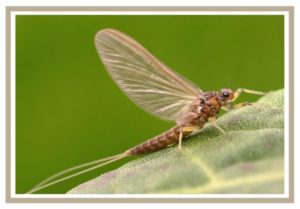
If you discover a hatch in the Spring or Autumn, you will have a lot of success with the Adams since it looks like a Mayfly.
Flying Caddis are similar to Mayflies. They have a hatch during the Spring and Fall. During those hatches, the trout have a feeding frenzy eating Caddis Flies. A great opportunity for you to step in and catch a bunch of fish with the Parachute Adams.
Even if you fish when a hatch isn’t going on, the Adams still looks like a Midge. Midges usually start showing up in the late Spring or early Summer and stay until Fall. Trout will eat them the entire time.
I personally would recommend using the Adams even when the bugs aren’t in a hatch (bugs become adults). Trout will still eat these flies throughout the summer months.
Bottom line, the Parachute Adams can be fished basically all of the seasons. Although I wouldn’t recommend using the Adams during the winter months because Mayflies and such aren’t going to be in a trout’s diet at the time.
The Parachute Adams is arguably the most popular trout dry fly on the market.
How to Tie The Parachute Adams Dry Fly
This video is from “In The Riffle” on Youtube. The Adams fly isn’t the most difficult fly to build and if you want, there are many variations that you can add to it. “Versatility” at it’s finest. If you have never tied a fly before but want to start, I wrote an article about the fly tying equipment to start tying flies here.
The Parachute Adams is the first fly I go to when I’m going after trout.
It can imitate several different bugs that the trout love to eat. Because it’s a dry fly, I can watch the fly dip under the water when a fish grabs it. It’s not expensive and isn’t super difficult to tie. Bottom line, this fly is a machine down stream.
I wish you the best of luck in your fly fishing adventures, and tight lines my friend!
Related: Elk Hair Caddis: Everything You Need To Know To Catch More Fish
